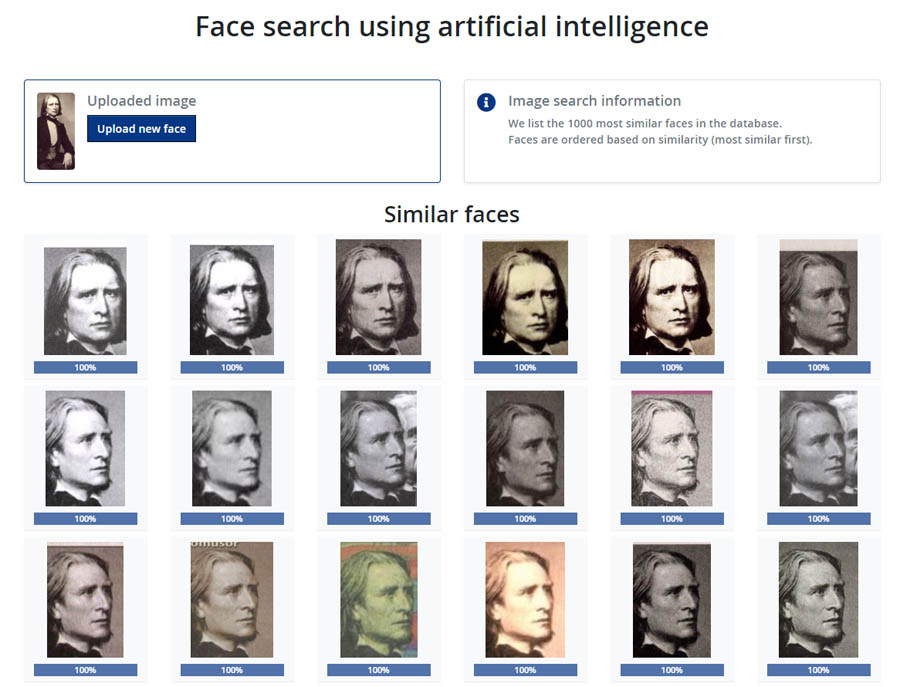Artificial Intelligence
Arcanum makes Hungarian heritage accessible with Amazon Rekognition
Arcanum specializes in digitizing Hungarian language content, including newspapers, books, maps, and art. With over 30 years of experience, Arcanum serves more than 30,000 global subscribers with access to Hungarian culture, history, and heritage.
Amazon Rekognition Solutions Architects worked with Arcanum to add highly scalable image analysis to Arcanum Digitheca, a free service provided by Arcanum, which enables you to search and explore Hungarian cultural heritage, including 600,000 faces over 500,000 images. For example, you can find historical works by author Mór Jókai or photos on topics like weddings. The Arcanum team chose Amazon Rekognition to free valuable staff from time and cost-intensive manual labeling, and improved label accuracy to make 200,000 previously unsearchable images (approximately 40% of image inventory), available to users.
Amazon Rekognition makes it easy to add image and video analysis to your applications using highly scalable machine learning (ML) technology that requires no previous ML expertise to use. Amazon Rekognition also provides highly accurate facial recognition and facial search capabilities to detect, analyze, and compare faces.
Arcanum uses this facial recognition feature in their image database services to help you find particular people in Arcanum’s articles. This post discusses their challenges and why they chose Amazon Rekognition as their solution.
Automated image labeling challenges
Arcanum dedicated a team of three people to start tagging and labeling content for Arcanum Digitheca. The team quickly learned that they would need to invest more than 3 months of time-consuming and repetitive human labor to provide accurate search capabilities to their customers. Considering the size of the team and scope of the existing project, Arcanum needed a better solution that would automate image and object labelling at scale.
Automated image labeling solutions
To speed up and automate image labeling, Arcanum turned to Amazon Rekognition to enable users to search photos by keywords (for example, type of historic event, place name, or a person relevant to Hungarian history).
For the Arcanum Digitheca project, preprocessing all the images was challenging. Arcanum ran a TensorFlow face search across all 28 million pages on a machine with 8 GPUs in their own offices to extract only faces from images.
The following screenshot shows what an extract looks like (image provided by Arcanum Database Ltd).

The images containing only faces are sent to Amazon Rekognition, invoking the IndexFaces operation to add a face to the collection. For each face that is detected in the specified face collection, Amazon Rekognition extracts facial features into a feature vector and stores it in an Amazon Aurora database. Amazon Rekognition uses feature vectors when it performs face match and search operations using the SearchFaces and SearchFacesByImage operations.
The image preprocessing helped create a very efficient and cost-effective way to index faces. The following diagram summarizes the preprocessing workflow.

As for the web application, the workflow starts with a Arcanum Digitheca user making a face search request. The following diagram illustrates the application workflow.

The workflow includes the following steps:
- The user requests a facial match by uploading the image. The web request is automatically distributed by the Elastic Load Balancer to the webserver fleet.
- Amazon Elastic Compute Cloud (Amazon EC2) powers application servers that handle the user request.
- The uploaded image is stored in Amazon Simple Storage Service (Amazon S3).
- Amazon Rekognition indexes the face and runs SearchFaces to look for a face similar to the new face ID.
- The output of the search face by image operation is stored in Amazon ElastiCache, a fully managed in-memory data store.
- The metadata of the indexed faces are stored in an Aurora relational database built for the cloud.
- The resulting face thumbnails are served to the customer via the fast content-delivery network (CDN) service Amazon CloudFront.
Experimenting and live testing Arcanum Digitheca
During our test of Arcanum Digitheca, the application performed extremely well. The searches not only correctly identified people, but also provided links to all publications and sources in Arcanum’s privately owned database where found faces are present. For example, the following screenshot shows the result of the famous composer and pianist Franz Liszt.

The application provided 42 pages of 6×4 results. The results are capped to 1,000. The 100% scores are the confidence scores returned by Amazon Rekognition and are rounded up to whole numbers.
The application of Arcanum Digitheca has always promptly, and with a high degree of certainty, presented results and links to all corresponding publications.
Business results
By introducing Amazon Rekognition into their workflow, Arcanum enabled a better customer experience, including building family trees, searching for historical figures, and researching historical places and events.
The concept of face searching using artificial intelligence certainly isn’t new. But Arcanum Digitheca uses it in a very creative, unique way.
Amazon Rekognition allowed Arcanum to realize three distinct advantages:
- Time savings – The time to market speed increased dramatically. Now, instead of spending several months of intense manual labor to label all the images, the company can do this job in a few days. Before, basic labeling on 150,000 images took months for three people to complete.
- Cost savings – Arcanum saved around $15,000 on the Arcanum Digitheca project. Before using Amazon Rekognition, there was no automation, so a human workforce had to scan all the images. Now, employees can shift their focus to other high-value tasks.
- Improved accuracy – Users now have a much better experience regarding hit rates. Since Arcanum started using Amazon Rekognition, the number of hits has doubled. Before, out of 500,000 images, about 200,000 weren’t searchable. But with Amazon Rekognition, search is now possible for all 500,000 images.
“Amazon Rekognition made Hungarian culture, history, and heritage more accessible to the world,” says Előd Biszak, Arcanum CEO. “It has made research a lot easier for customers building family trees, searching for historical figures, and researching historical places and events. We cannot wait to see what the future of artificial intelligence has to offer to enrich our content further.”
Conclusion
In this post, you learned how to add highly scalable face and image analysis to an enterprise-level image gallery to improve label accuracy, reduce costs, and save time.
You can test Amazon Rekognition features such as facial analysis, face comparison, or celebrity recognition on images specific to your use case on the Amazon Rekognition console.
For video presentations and tutorials, see Getting Started with Amazon Rekognition. For more information about Amazon Rekognition, see Amazon Rekognition Documentation.
About the Authors
 Siniša Mikašinović is a Senior Solutions Architect at AWS Luxembourg, covering Central and Eastern Europe—a region full of opportunities, talented and innovative developers, ISVs, and startups. He helps customers adopt AWS services as well as acquire new skills, learn best practices, and succeed globally with the power of AWS. His areas of expertise are Game Tech and Microsoft on AWS. Siniša is a PowerShell enthusiast, a gamer, and a father of a small and very loud boy. He flies under the flags of Croatia and Serbia.
Siniša Mikašinović is a Senior Solutions Architect at AWS Luxembourg, covering Central and Eastern Europe—a region full of opportunities, talented and innovative developers, ISVs, and startups. He helps customers adopt AWS services as well as acquire new skills, learn best practices, and succeed globally with the power of AWS. His areas of expertise are Game Tech and Microsoft on AWS. Siniša is a PowerShell enthusiast, a gamer, and a father of a small and very loud boy. He flies under the flags of Croatia and Serbia.
 Cameron Peron is Senior Marketing Manager for AWS Amazon Rekognition and the AWS AI/ML community. He evangelizes how AI/ML innovation solves complex challenges facing community, enterprise, and startups alike. Out of the office, he enjoys staying active with kettlebell-sport, spending time with his family and friends, and is an avid fan of Euro-league basketball.
Cameron Peron is Senior Marketing Manager for AWS Amazon Rekognition and the AWS AI/ML community. He evangelizes how AI/ML innovation solves complex challenges facing community, enterprise, and startups alike. Out of the office, he enjoys staying active with kettlebell-sport, spending time with his family and friends, and is an avid fan of Euro-league basketball.